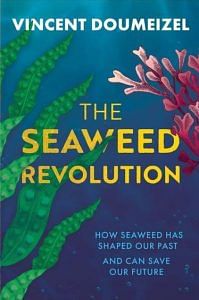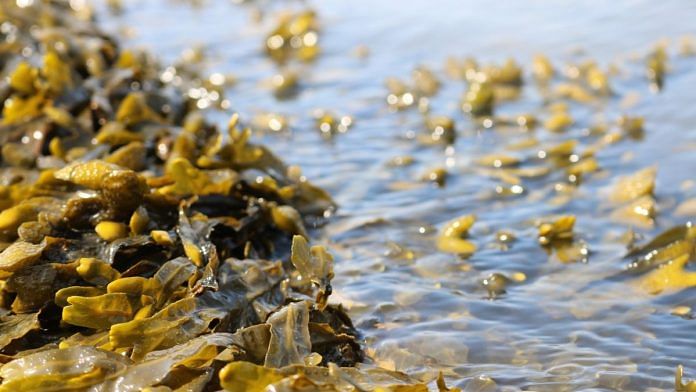So we knew for sure that the first Americans came from Asia around this period: they had crossed the lands that connected Siberia to Alaska in the area now called the Bering Strait.
This region had just been freed from the ice and was not yet underwater. The pioneers progressed to Central and South America over the following millennia. Numerous traces are
still visible, bearing witness to their journey over hundreds of successive generations. America was the final continent to be conquered by Sapiens, the first hominid to evolve there.
What Tom Dillehay found in Monte Verde was a waterlogged bog that covered the floor of a perfectly preserved cave containing many remains. The high acidity of the soils and the peatbog had prevented bacterial degradation, and the organic residues were intact. About thirty people would have lived in this cave. A fairly imprecise initial dating put them at over 13,000 years old, which appeared to be a historical aberration. The team returned reports that were not published: no one agreed to validate them on the pretext that the models were erroneous, or the data was incorrect. The scientific community could not believe the theory of such an early settlement in America, at such a southern latitude. It simply could not be possible!
Years later, carbon-dating cleared up the mystery. The human remains were between 14,000 and 18,000 years old. This camp was therefore inhabited by human beings
long before Sapiens arrived in America. This discovery was incomprehensible.
The old debate resurfaced between what the science says should be true and what is actually the case.
For scientists, there could be no other possible passage than the Bering Strait, but no previous human trace has ever been found on the tens of thousands of kilometres between there and Monte Verde. Plus, 14,000 years before our era, much of this land was frozen and unsuitable for the survival of a group of hunter-gatherers. The separation of the American continent from the rest of the world took place millions of years before the appearance of Homo erectus, and no human boat could have crossed the immense Pacific Ocean before our modern era. This whole hypothesis about such an early settlement was completely inconsistent. Unless aliens had come down from outer space and landed right there in Monte Verde…
But the expedition finally discovered conclusive evidence at the base of the cave: the dried remains of twenty-two different types of seaweed. Meticulously prepared, cut into small pieces, some of it chewed, it was obviously used for both food and medicine. Here, several hours on foot from the coast, the vegetation around the cave was lush and there
was obviously no shortage of meat around. So why go to so much trouble to go and find seaweed?
This discovery gave rise to an entirely new theory about human settlement in America: the Kelp Highway. Humans from Monte Verde would have simply followed the seaweed along the coast.
Gradually, the discovery of other equally ancient human traces along the coast, notably in present-day Oregon, confirmed this thesis. Homo sapiens settled in America well over 13,000 years ago. They travelled along the Pacific coast in small boats and over several generations. They followed this route because it was rich in resources that were necessary and familiar to them, notably the forests of giant kelp, known as Macrocystis.
Macrocystis can grow up to 60 metres in height and provide an ecosystem rich in shellfish, crustaceans, fish and other algae: all organisms that could easily have fed our distant ancestors.
Long before the gold rush, the American West had experienced a ‘seaweed rush’!
This Kelp Highway danced along the Californian coast and then picked up again on the Peruvian and Chilean coasts. It allowed humans to progress south without going inland. Between the two continents, in the Central American region, they used the mangroves and the numerous red seaweeds found in these warm seas.
Why is there no trace of this descent along the coast? The reason is simple. The melting of the glaciers 12,000 years ago caused the water to rise by more than 100 metres, erasing
almost all traces of these very first Americans who had no interest in venturing further into hostile lands. The remains of these seafaring pioneers have mostly been swallowed up
by the ocean today.
But the presence of these twenty-two different types of seaweed in the Monte Verde cave, including Porphyra (nori), which is used to wrap our sushi, as well as Durvillaea, a traditional dish in Chile even today, demonstrates a great knowledge of marine plant resources. The efforts made to transport this food from the coast to the cave show its value at the time and suggest a complex trading network.
These facts also supported another – perhaps even more important – theory about who we are. It would be impossible for Sapiens to have developed such a disproportionately large brain compared to our body mass by evolving solely in the savannah. The genetic development of a neural network as sophisticated as ours requires specific micronutrients such as iodine and, above all, plenty of polyunsaturated omega-3 (EPA and DHA),10 which is found in large quantities in seaweed and fatty fish but not on land.11 It is therefore highly likely that when humans arrived in America they ate seaweed as well as the surrounding fish and crustaceans, as they had always done, or almost always…
It has now been established that, for several tens of thousands of years, the Heiltsuk, and other peoples of British Columbia in Canada, or Alaska, have celebrated the new year in the spring when the herring spawn on the seaweed. Thousands of eggs (up to 20,000 per female herring) are laid on the large kelp, which they cling to. These are collected and eaten, providing a considerable and vital quantity of proteins while respecting the balance of the ecosystems. The SOK (spawn on kelp) harvest is an institution, and in 1996 the Supreme Court of Canada confirmed the practice of this harvest as an essential and sustainable activity in these regions. The number of dishes is a clear testimony to these traditions originating from this first human migration.
Today, the consumption of seaweed as a food or medicine is still very common among the indigenous populations along this ancient ‘Kelp Highway’ from northern British Columbia in Canada to southern Punta Arenas in Chile.
So, whatever the pioneers of archaeology (mostly men…) may have thought, the resources necessary for the vertiginous development of our species did not come solely from men’s mammoth-hunting prowess while women stayed in the caves with the kids! It is very likely that men, women and children collected these fragile little seaweeds and shells along the coast for food, and, in the process, they developed their brains in a spectacular way.
Monte Verde is currently the oldest site testifying to the intensive use of ‘sea vegetables’ by humans for food and medicine.
 This excerpt from Vincent Doumeizel’s ‘The Seaweed Revolution: How Seaweed Has Shaped Our Past And Can Save Our Future’, has been published with permission from Penguin Random House India.
This excerpt from Vincent Doumeizel’s ‘The Seaweed Revolution: How Seaweed Has Shaped Our Past And Can Save Our Future’, has been published with permission from Penguin Random House India. 





